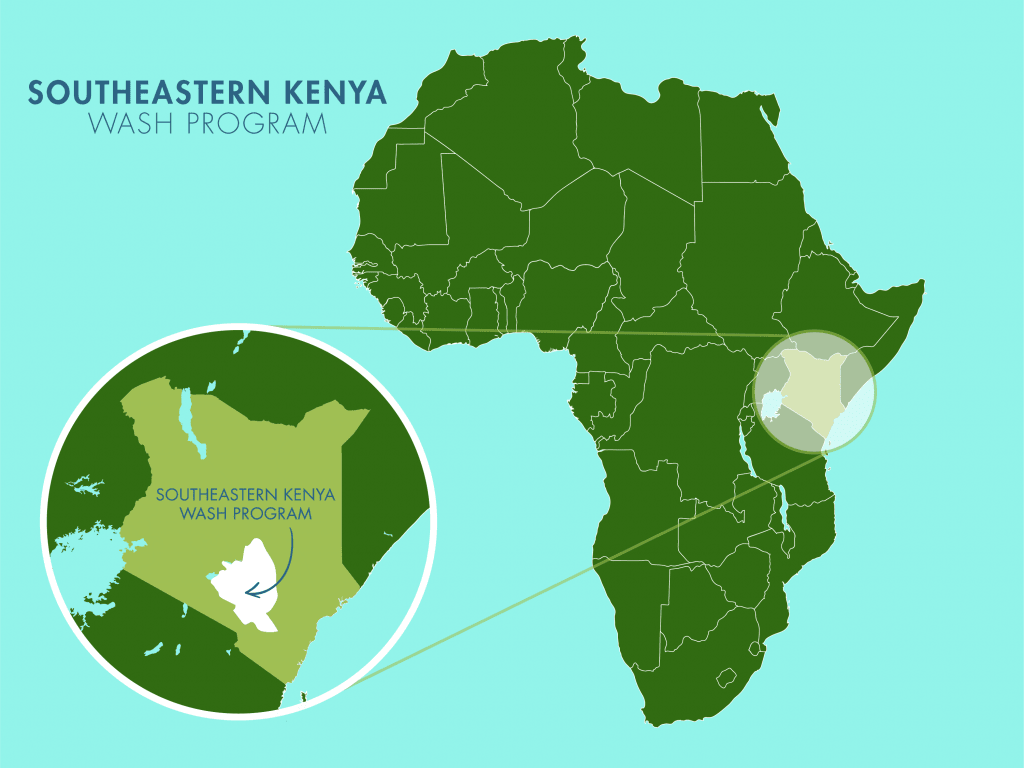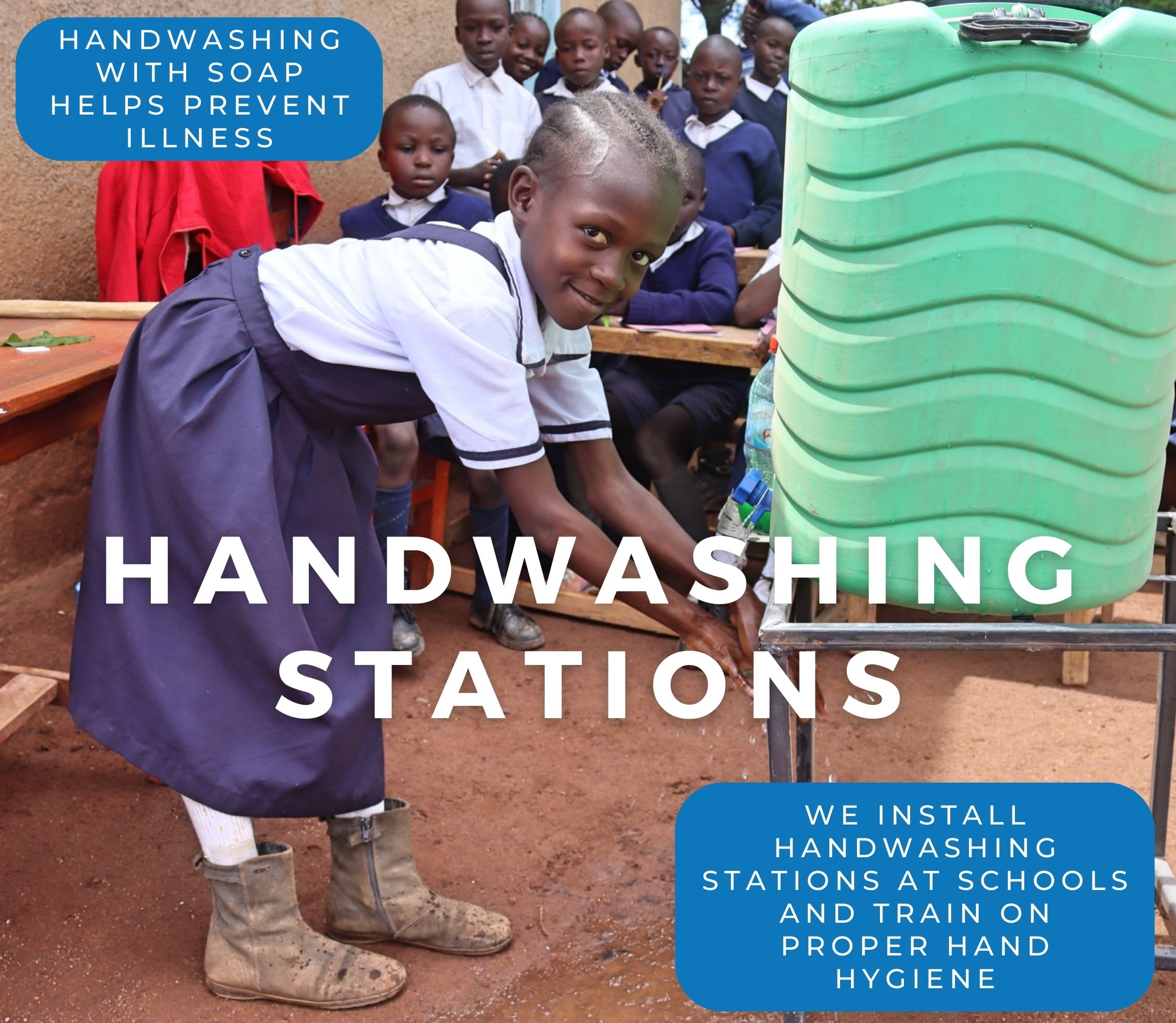85 students and eight staff members at Kathiani Secondary School in Southeastern Kenya struggle every day to access sufficient water.

Faith Musyimi, a 38-year-old teacher, has worked at the school for several years. The school was started in 2011 to support secondary education for students graduating from Kathiiani Primary School. Over the years, its population has grown steadily, and performance has gradually improved, with some students progressing to colleges and universities. Despite this progress, Faith has seen one persistent challenge continue to hold her students back — the lack of a safe and reliable water source.

Faith Musyimi.
The school relies mainly on rainwater collection. During the rainy season, water tanks fill up and provide enough water for a short time, but as soon as the dry season begins, the tanks quickly empty. They can also access a community borehole with a water kiosk, but it is often overcrowded, and the water quality and quantity are unreliable. Students spend much of their time walking to and from the borehole, waiting in line, and carrying heavy containers of saline water that tastes unpleasant and stains their teeth. Sometimes, the borehole runs dry completely, forcing students to go without water for extended periods.

Long line at the borehole.
Ms. Musyimi explained the root of the problem clearly.
“The lack of water at the school’s water source is primarily caused by seasonal droughts and unreliable rainfall patterns, which lead to dry boreholes and empty streams during much of the year. Additionally, existing school water tanks are never enough to support students throughout the year with water. In some cases, nearby water points are shared with the wider community, causing overuse and depletion. These factors combined leave the school without a dependable water supply, especially during the dry season," shared Ms. Musyimi.

The insufficient rain tank.
On average, students make about three trips per day to the borehole to fetch water. The trip takes roughly ten minutes each way, though it can stretch to twenty when queues are long or the water level is low. The task often falls during class time, disrupting lessons and leaving students tired and distracted when they return.
Ms. Musyimi has witnessed how this daily struggle affects both health and learning.

Hauling water back to school.
“The lack of water at school deeply affects students in several ways. Without clean water, they are unable to wash their hands or use toilets hygienically, increasing the risk of illness and absenteeism. Girls, in particular, face challenges managing menstrual hygiene, which can lead to missed classes or even dropping out. Learning is disrupted as students may be asked to fetch water during school hours, reducing time spent in the classroom. Overall, the lack of water creates an unhealthy and unstable learning environment, limiting both educational outcomes and personal well-being," she said.
The consequences are heartbreaking to watch. Children often return from their water-fetching trips dusty, exhausted, and unable to concentrate. The physical strain of carrying full jerrycans over a distance leaves them exhausted. Safety is also a concern — walking outside the school grounds, especially under the hot sun or late in the day, puts students at risk.

Things could change if the school had access to safe, consistent water.
“With access to safe water, academic performance would likely improve significantly. Students would be healthier, missing fewer days due to waterborne illnesses or hygiene-related issues. They would also be more focused in class, as they would no longer be distracted by thirst or the discomfort of poor sanitation. Girls would attend school more consistently, especially during their menstrual cycles. Additionally, time currently spent fetching water could be redirected toward learning. In a cleaner, safer environment, students would thrive both physically and academically, leading to better attendance, concentration, and overall achievement," Ms. Musyimi stated.
Even teachers and staff feel the strain of the water shortage, forced to ration what little they have.
“School staff members face several challenges when rationing or distributing water to students. First, the limited supply often forces them to prioritize essential uses, such as drinking and minimal sanitation, which can create tension and dissatisfaction among students. Managing this scarcity takes time and effort, distracting teachers and staff from their primary educational duties. The lack of proper storage containers or distribution systems can also lead to water wastage or contamination, further complicating efforts to meet students' basic needs," she continued.

The school's kitchen is dependent entirely on a clean water supply.
Ms. Musyimi's perspective as a teacher has given her a deep understanding of how water affects every part of school life — from academics and hygiene to safety and morale. She believes that a sustainable water solution would change everything.
“Water is essential to me because it sustains every aspect of daily life—health, hygiene, and learning all depend on it. Without reliable access to clean water, basic activities like drinking, cooking, and washing become difficult, impacting well-being and productivity. Water supports not just survival but also growth and opportunity, enabling me and those around me to live healthier lives, focus on education or work, and build a better future. In many ways, water truly is the foundation of life and progress," she passionately stated.
After ten years without a safe and reliable water source, she remains hopeful. She knows that constructing a much larger rainwater tank would be more than a practical project — it would be a lasting solution. The tank would capture and store rainwater during the wet season, ensuring that students and teachers have clean water throughout the year. It would reduce the need for long, exhausting walks, improve hygiene and sanitation, and allow students to spend more time learning.
It is a simple but powerful vision: a school where children can study, stay healthy, and dream without being held back by thirst.
Steps Toward a Solution
Schools without reliable, on-premises water access often rely on students to fetch and carry water, leading to rationing and uncertainty about water quality. The water is typically poured into a communal storage tank and used by the entire school. With children carrying water from all different sources, it is also impossible for teachers and staff to know exactly where the water comes from and how safe it is to drink.
A new water point will be located on-premises at the school to ensure accessibility, reliability, and safety for students, teachers, and staff while meeting our school coverage goals. Having water available at the school allows children to drink, wash hands, and use sanitation facilities without leaving school grounds, preventing disruptions to lessons and reducing safety risks. A dedicated source increases water availability, reduces reliance on stored water, minimizes rationing, and ensures confidence in the safety of the water. This means staff and students are healthier, and their lessons aren’t disrupted, contributing to a better education!
Our technical experts worked with the school leadership and the local community to identify the most effective solution to their water crisis. Together, they decided to construct a rainwater harvesting system.
Rainwater Harvesting System
A rainwater collection system consists of gutters that channel rainwater effectively into large holding tanks. Attached to buildings with clean, suitable roofing, these systems are sized according to the population and rainfall patterns. Water can be stored for months, allowing for easy treatment and access. Learn more
Handwashing Stations
Alongside each water source, we install two gravity-fed handwashing stations, enabling everyone at the school to wash their hands. Handwashing is crucial for preventing water-related illnesses within the school and community. Student “health clubs” maintain the stations, fill them with water, and supply them with soap, which we often teach them how to make.
School Education & Ownership
Hygiene and sanitation training are integral to our water projects. Training is tailored to each school's specific needs and includes key topics such as proper water handling, improved hygiene practices, disease transmission prevention, and care of the new water point.
To ensure a lasting impact, we support forming a student health club composed of elected student representatives and a teacher. These clubs promote hygiene practices schoolwide and keep handwashing stations well-stocked. This student-led model encourages a sense of ownership and responsibility.
Safe water and improved hygiene habits foster a healthier future for the entire school.

 Rainwater Catchment
Rainwater Catchment
 Rehabilitation Project
Rehabilitation Project


















